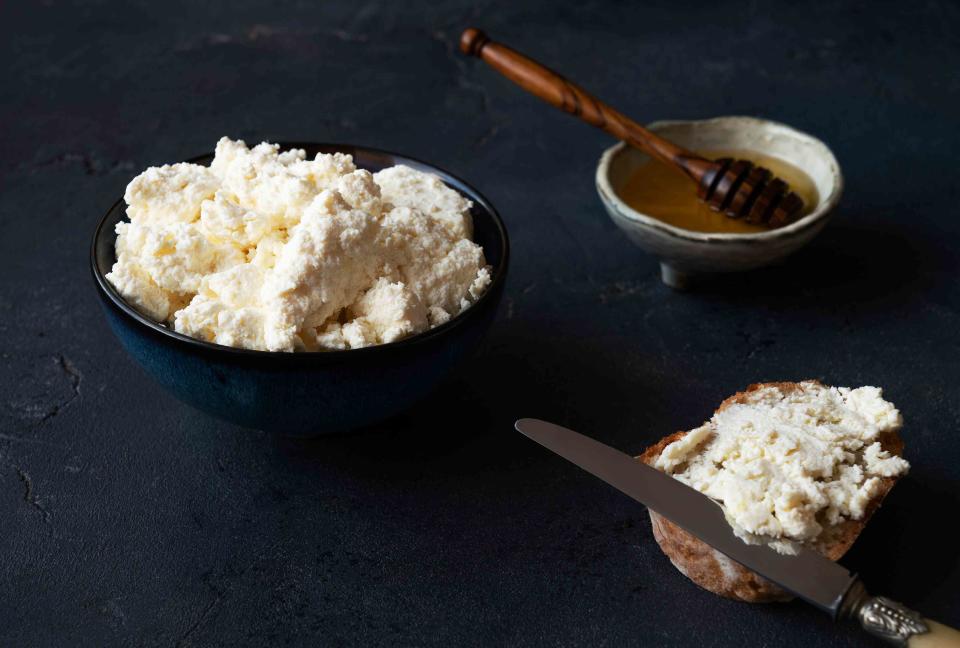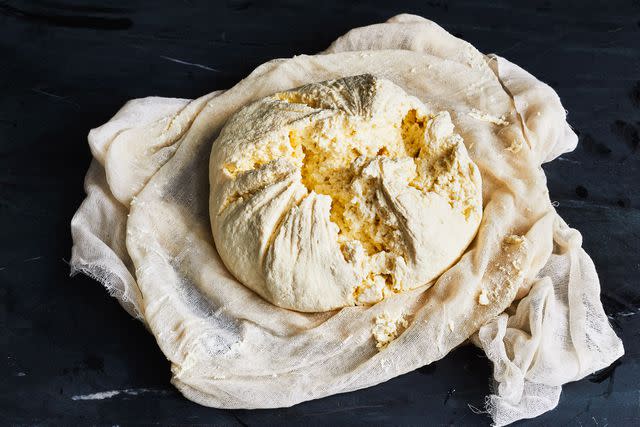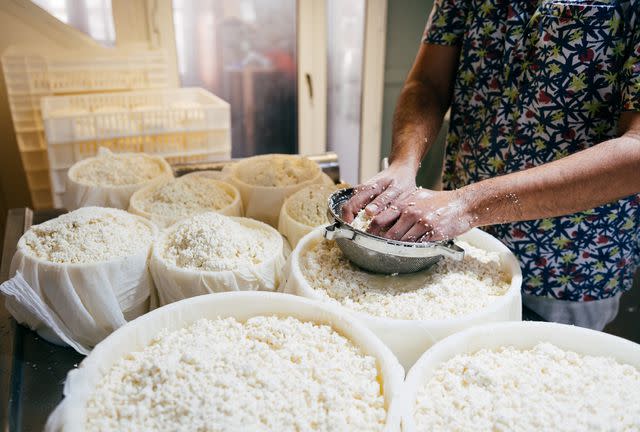When to Use Ricotta vs. Cottage Cheese
Here’s everything you need to know when choosing between these fresh, milky cheeses.

teelesswonder / Getty Images
Cottage cheese and ricotta are both fresh, relatively mild cheeses — and both delicious in their own right — but they’re not the same thing.
“Although both are unripened (read: fresh) cheeses, there are technical differences,” says Kathleen Serino, a national training and curriculum manager at Murray’s Cheese. “From a high level, it is how the milk solids are treated during the cheesemaking process.”
Though they’re both made from cow’s milk, ricotta cheese is produced with leftover whey from the milk-making process, whereas cottage cheese uses the curds. Ricotta and cottage cheese also differ in texture and flavor: Ricotta is smoother and slightly sweeter, while cottage cheese has a lumpier consistency and tangier flavor.
Read on for more on how these dairy-aisle staples differ.

What is ricotta cheese?
Ricotta cheese means “recooked,” and it’s indeed often made with leftover whey (the liquid that remains after milk has been curdled and strained) from cow’s milk. “The residual curds remaining in whey can be coagulated by acid with the help of steady cooking over heat,” explains Serino. “Easy enough to make at home from scratch, ricotta has to be carefully ladled into a draining basket to maintain its delicate and fluffy texture,” she adds.
Ricotta cheese has a slightly sweet, milky flavor and a noticeably pillowy texture, which makes it ideal for baked Italian-American casseroles, baked goods like cakes and cookies, and sweet and savory hors d’oeuvres. Ricotta salata, meanwhile, is a salted and aged version of ricotta.
Related: Our 20 Best Ricotta Recipes
To make ricotta at home, start by warming dairy (usually whole milk with a little bit of cream, or with buttermilk for an extra tangy flavor) on a stovetop. Once it begins to steam and foam, add a splash of acid (lemon juice or white vinegar works best) and stir continuously until the curds begin to form. Transfer the mixture to cheesecloth to strain the whey; the remaining creamy curds become ricotta.

Galdric / Getty Images
What is cottage cheese?
“Cottage cheese is made by coagulating milk with acid [slowly]. The solids are then cut into curd-size pieces and cream is added as a seasoning,” explains Serino. Whereas ricotta is sweeter, cottage cheese has a notable tangy flavor from the slow acid fermentation. It has a heavier, thicker consistency than ricotta, and is generally studded with larger curds, though it comes in small and large curd varieties.
When to use ricotta vs. cottage cheese
Mild, smooth, and fresh-tasting, ricotta cheese is incredibly versatile in sweet and savory dishes alike — it can be used to make fluffy pancakes, whisked into a breakfast frittata, blended into meatballs, or smeared on crostini for a quick appetizer. It’s also delicious in pasta dishes like Skillet Lasagna, Lemon-Ricotta Pasta, or Ricotta Gnocchi, and stars in not-too-sweet desserts like our Honey-Ricotta Mousse and Limoncello-Ricotta Cheesecake. If you’re not using ricotta in a baked dish, it’s best served cold.
Related: 15 Lemon-Ricotta Recipes From Creamy Pasta to Fluffy Pancakes
Although slightly tangy, protein-packed cottage cheese is often enjoyed on its own or topped with fresh fruit, it’s traditional in many noodle dishes from around the world like spaetzle and kugel. It can also be layered with fresh or dried fruit and granola for a nourishing breakfast or lunch parfait, or used as a dip for pita chips and raw crudités. While you can substitute cottage cheese for ricotta in certain dishes like lasagna, avoid using it in recipes like cheesecake that call for a smoother texture.
How to shop for ricotta and cottage cheese
Ricotta and cottage cheese are both widely available, and can be found in the dairy aisle of your grocery store. “For ricotta, I am looking for an Italian-style producer, or perhaps organic,” says Serino. “If you find one labeled ‘hand-dipped,’ that is a good indicator for deliciousness and delicate texture.” Better yet, look for imported ricotta made with sheep or water buffalo milk for a rich and creamy flavor.
Related: How to Store Soft, Hard, and Shredded Cheese
When shopping for cottage cheese, look for brands that produce whole milk, large curd cheeses for the best flavor and texture. “When it comes to cottage cheese, I am reaching for either a semi-local producer or an organic version — if there is a local, organic version, all the better,” says Serino. As with all fresh dairy products, look at the best-by date; the more recently the cheese has been made, the better it will taste.
For more Food & Wine news, make sure to sign up for our newsletter!
Read the original article on Food & Wine.


